A day tour of the San Agustín area
The San Agustín area has a bunch of archaeological sites and waterfalls which can’t be reached by public transport. There is a pretty standard tour by 4WD jeep which takes all of these sites in, and can be arranged anywhere in town. Some of the sites on this tour didn’t look especially ‘exciting’ – but some looked ‘ok’, and we figured that as we had come all of this way over a mountain to San Agustín then we may as well take a look! 🙂
So.. we were ready at 9am to be picked up – and our driver was actually ready on time. Off we went in our jeep – us and a Russian mother and daughter – up the hill out of town past all the fancy hotels with valley views. At this point, things began to get a little less organised….. we pulled into one of these hotels and waited for over 30 minutes while a young Colombian couple finished their breakfast…!
Once we got underway, our first stop was the ‘Estrecha del Magdalena’ – the strait of Magdalena. This is the narrowest point of the river Magdalena. It was nice enough, but a little underwhelming, and full of all the other tour groups…

The next stop was the museum of Obando – a small museum with some archaeological sites and excavations. This too was a bit ordinary… so far we weren’t feeling the love for this tour…

We did see some coffee beans drying on the road outside though! 🙂 Yes, anything to do with coffee makes us happy 🙂

I should mention that although I have called this a ‘tour’, in reality it’s more like a ‘guy driving a 4WD jeep around to a list of places’. Our driver guy decided to add a couple of extra stops to our itinerary – we were really happy about this, as we enjoyed both the extra stops A LOT! 🙂
The first of these extra stops was to a ‘panela‘ factory. Panela is unrefined cane sugar – it is massively popular in Colombia. It comes in the form of giant brown blocks, and is very cheap. It is used to make aguapanela – a sugary drink, as well as to sweeten just about anything. It is very easy to make from sugarcane, and perhaps ‘factory’ is not quite the right word for where we went…. as it was really just a bunch of sheds on the edge of a farm.
Our driver showed us around all the areas of the panela-making process – eating plenty of it along the way (and encouraging us to do so too!). We suspected that he just wanted to hang out with his mates for a bit and eat lots of free sugar 🙂 Still, it was really interesting to see how it was made.
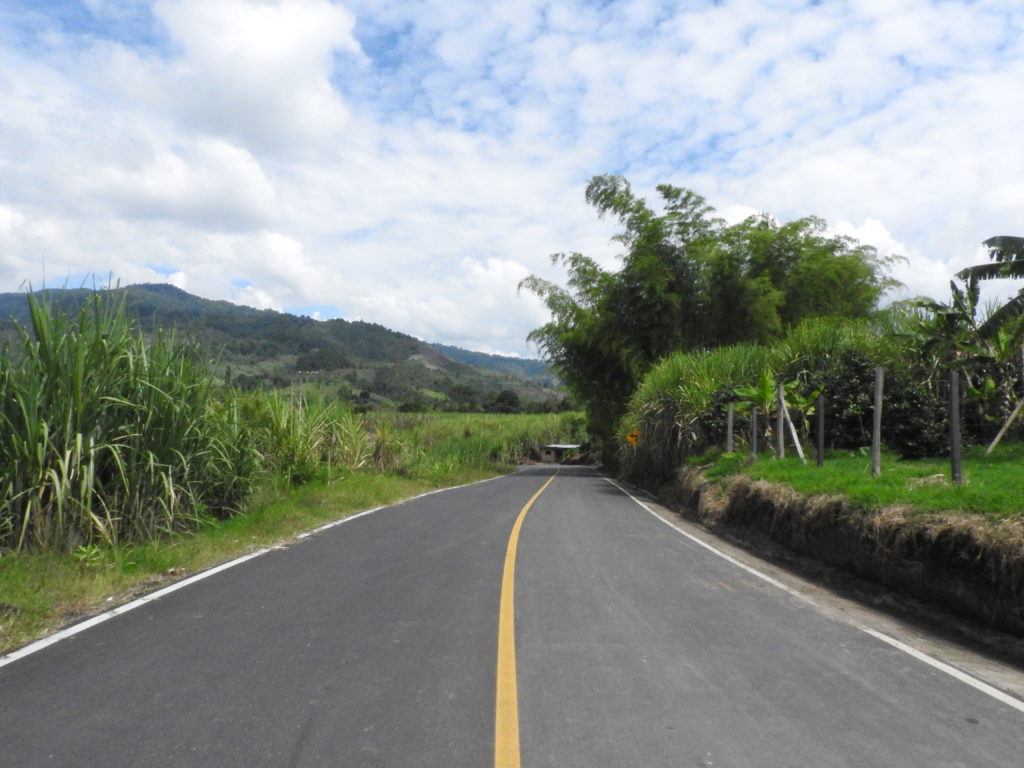

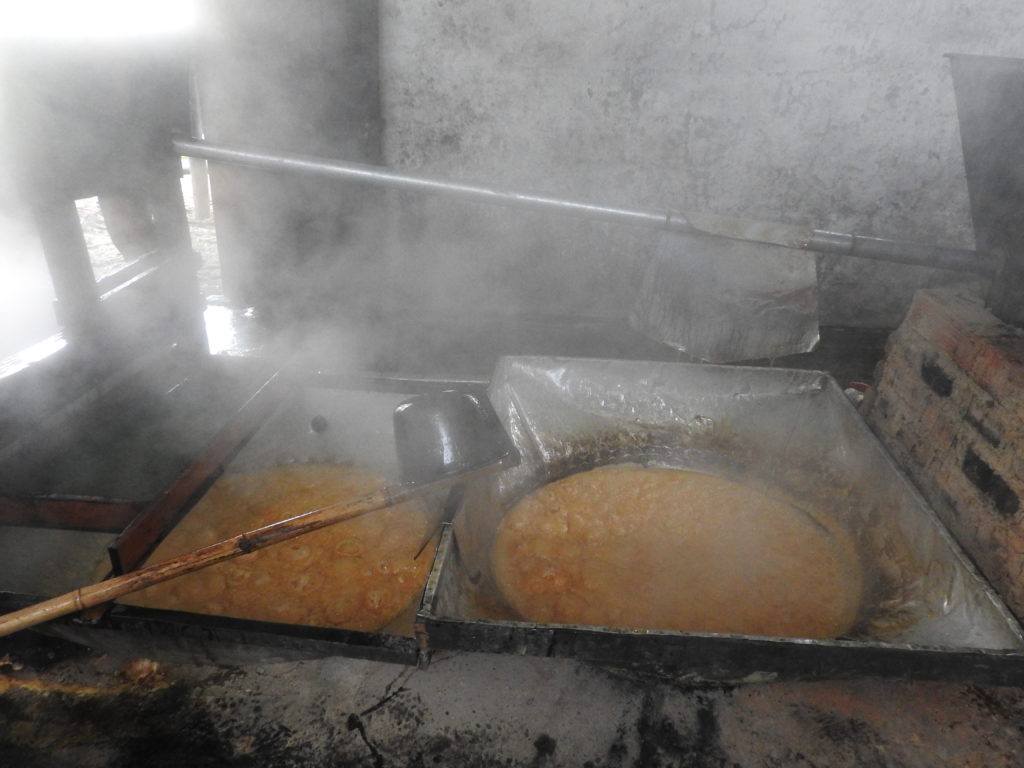

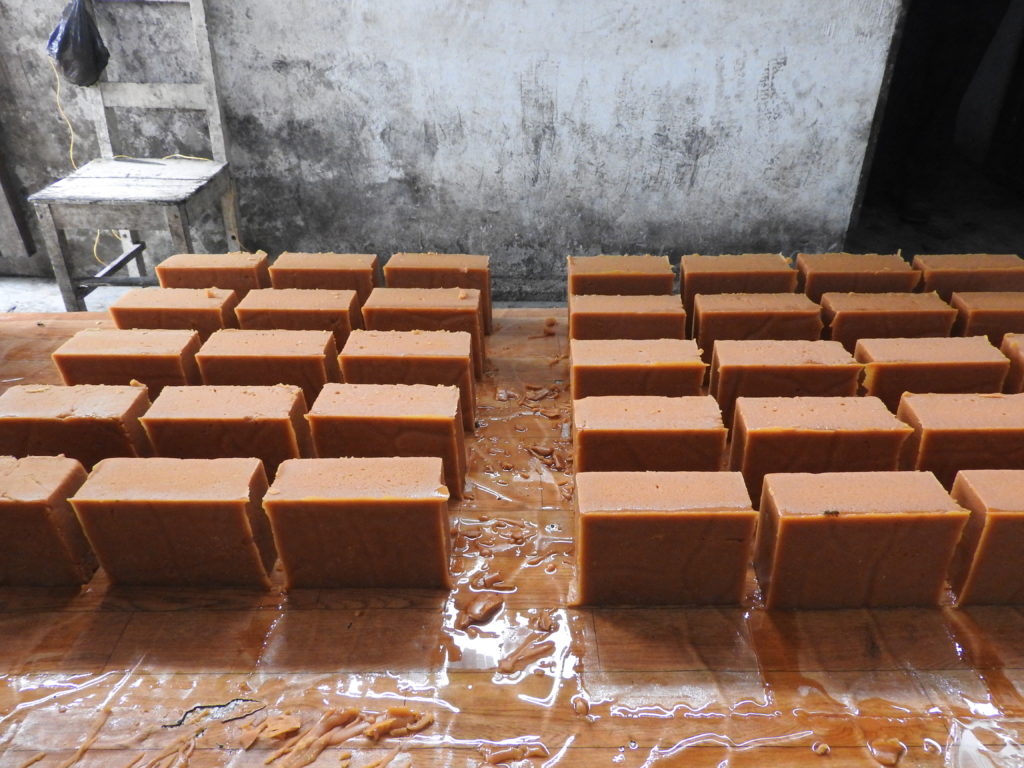
After the first unofficial stop for ‘sugar’, the next unofficial stop was for ‘coffee’. Pretty much every field around San Agustín is planted with either sugar or coffee. Our stop was at a viewpoint overlooking the valley and some coffee bushes.


With the unofficial stops out of the way, it was back to the ‘official’ stops – with some more archaeological sites – the first of which was ‘Alto de los Idolos’. This area is part of the San Agustín Archaeological Park.
The San Agustín Archaeological Park is a series of sites around San Agustín, containing lots of mysterious statues. The main site is only a few kilometres from San Agustín, and we would be visiting that site the day after this tour. Other sites are scattered around the area – and Alto de los Idolos is one of those sites.
The statues at these sites are the largest group of monoliths in all of South America – over 600 have been found. They are believed to date from between the 1st and 8th centuries, and were created by a northern Andean culture about which very little is known. They were found in large burial mounds connected to one another by terraces, paths, and earthen causeways.
We didn’t know very much about the statues when we went on this tour – because we knew that we were visiting the main site the day after, we hadn’t bothered reading anything about them! 🙂 Yes, HOW LAZY!
So on this tour, we just enjoyed looking at them without really knowing what they were for….! 🙂
It will be the same for you in this blog post ;-), as I will explain more about the statues when I write the post about the main park area.. 🙂
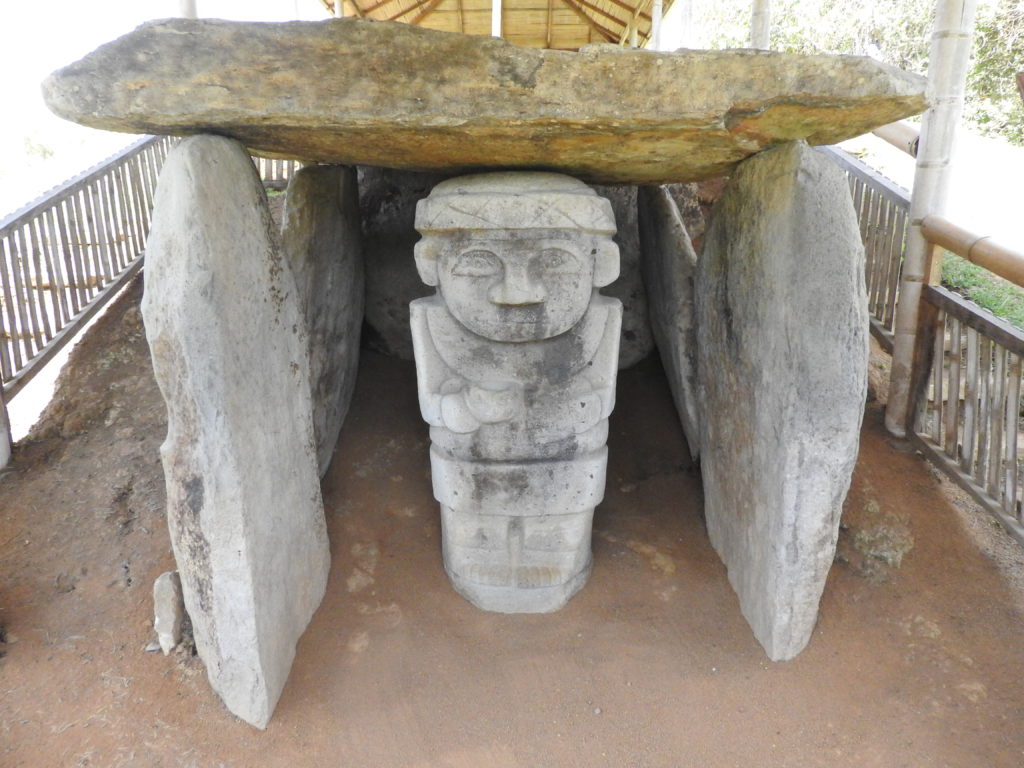
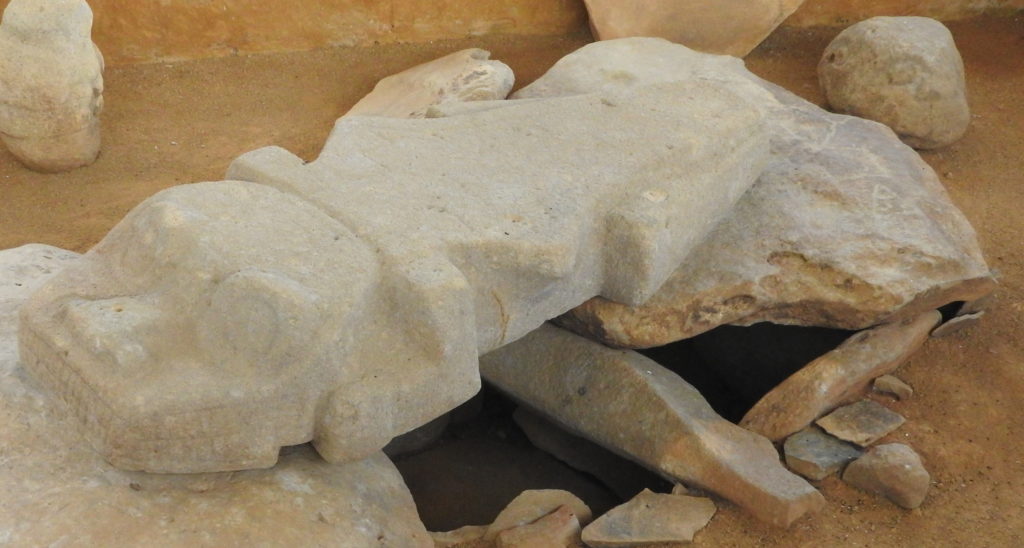
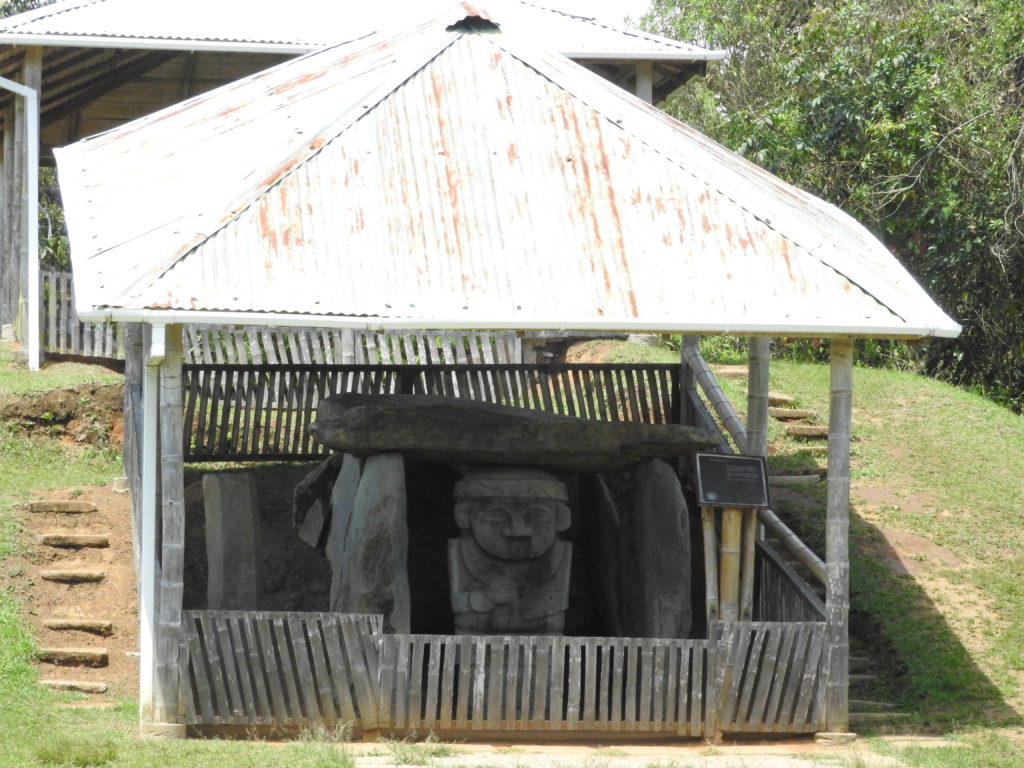
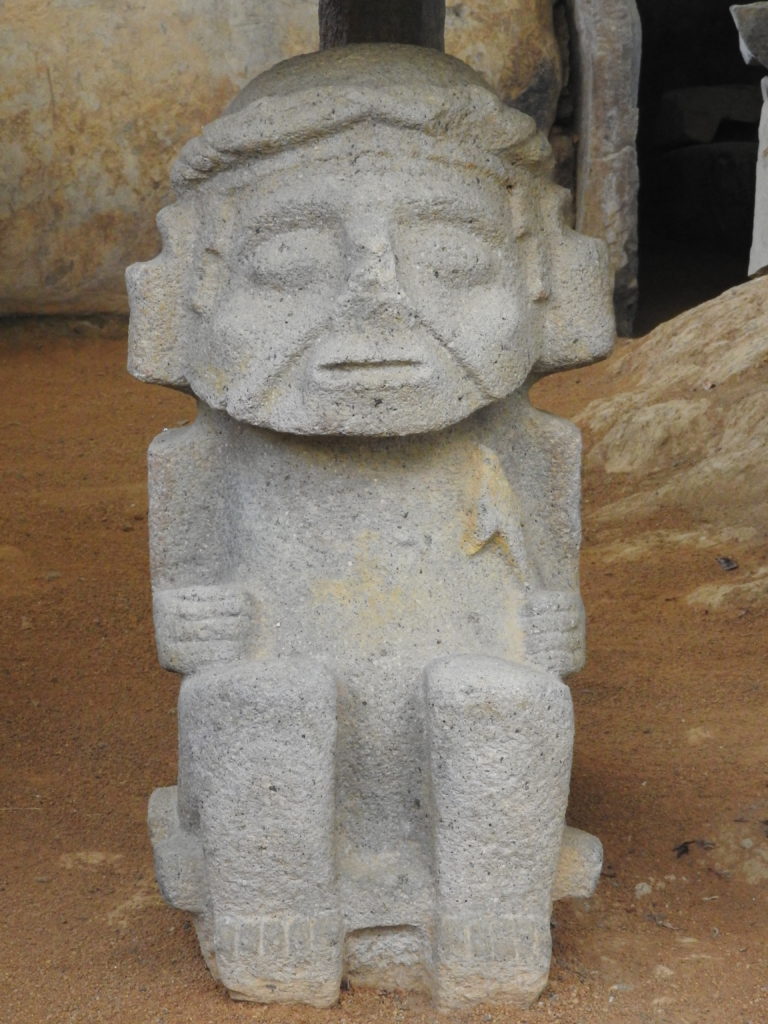
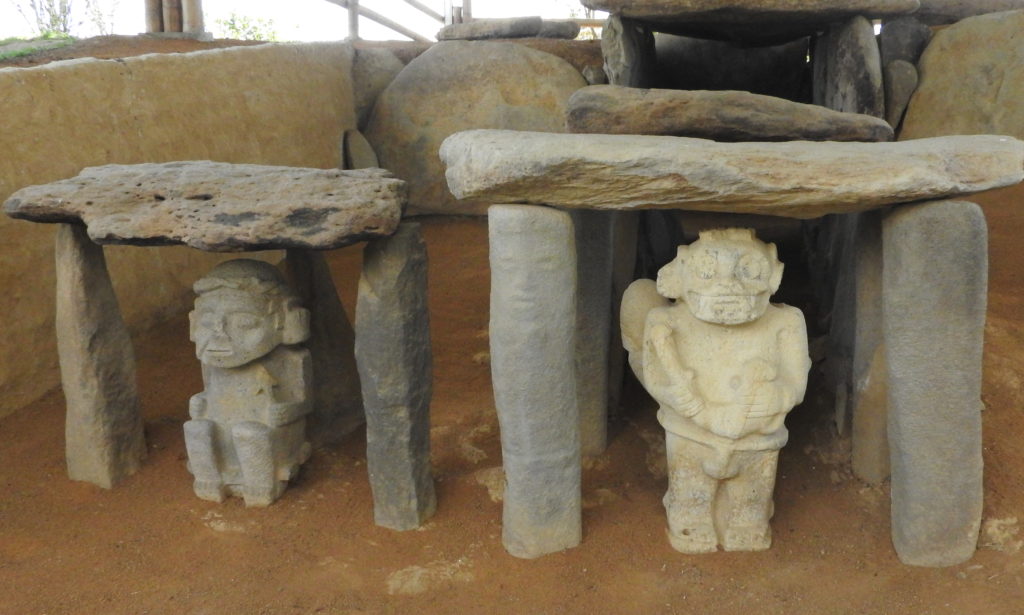
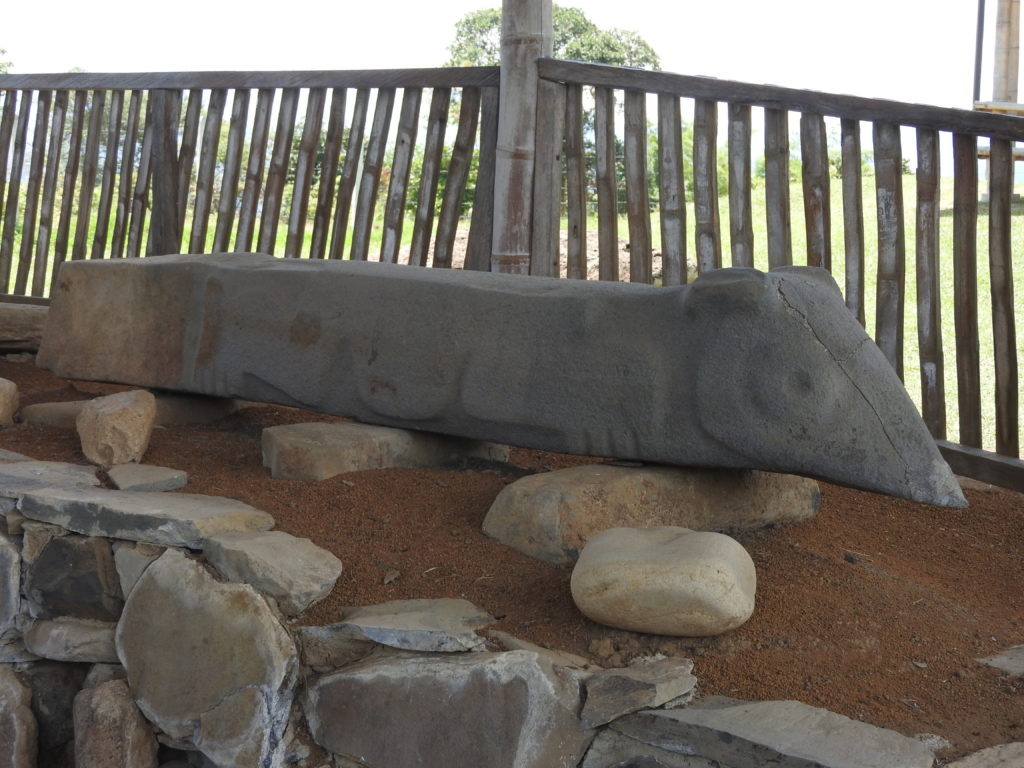
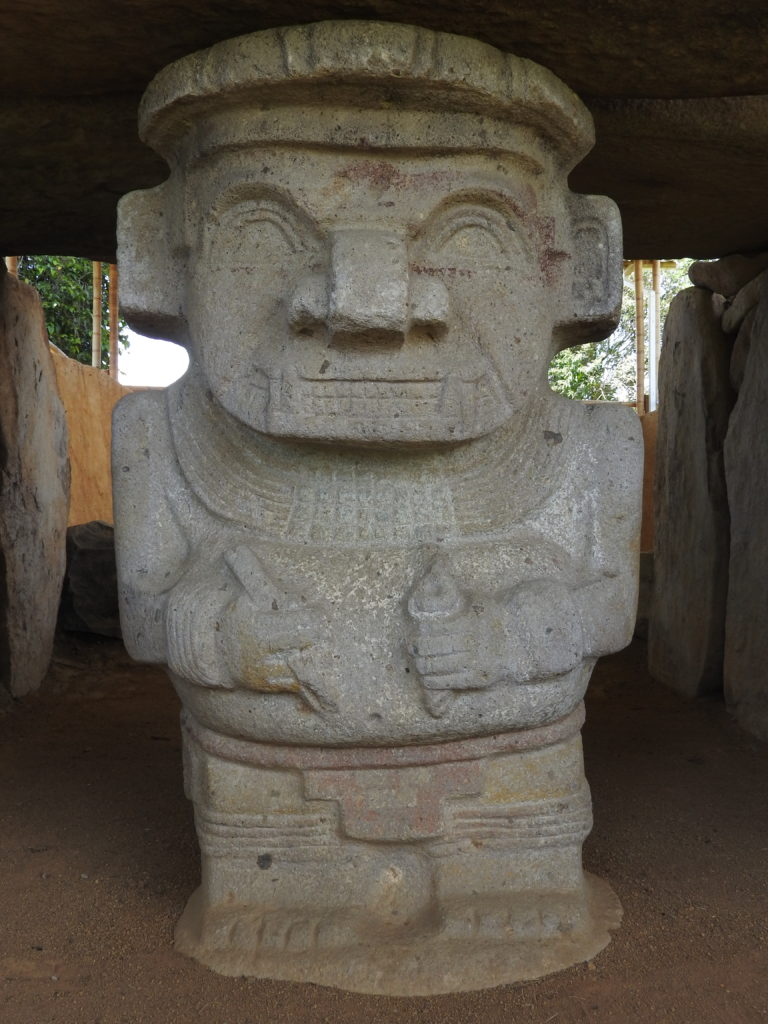
The burial tombs and statues were located on top of a series of hills, and it was a lovely place for a stroll around.

Walking amongst the statues was hungry work – luckily the next stop was lunch… then we moved on to another burial site – Alto de las Piedras. This was similar to the Alto de los Idolos, but a bit smaller. This area contained a very famous statue called the ‘doble-yo’, or the ‘double-I’ statue. This is because the statue has two heads.

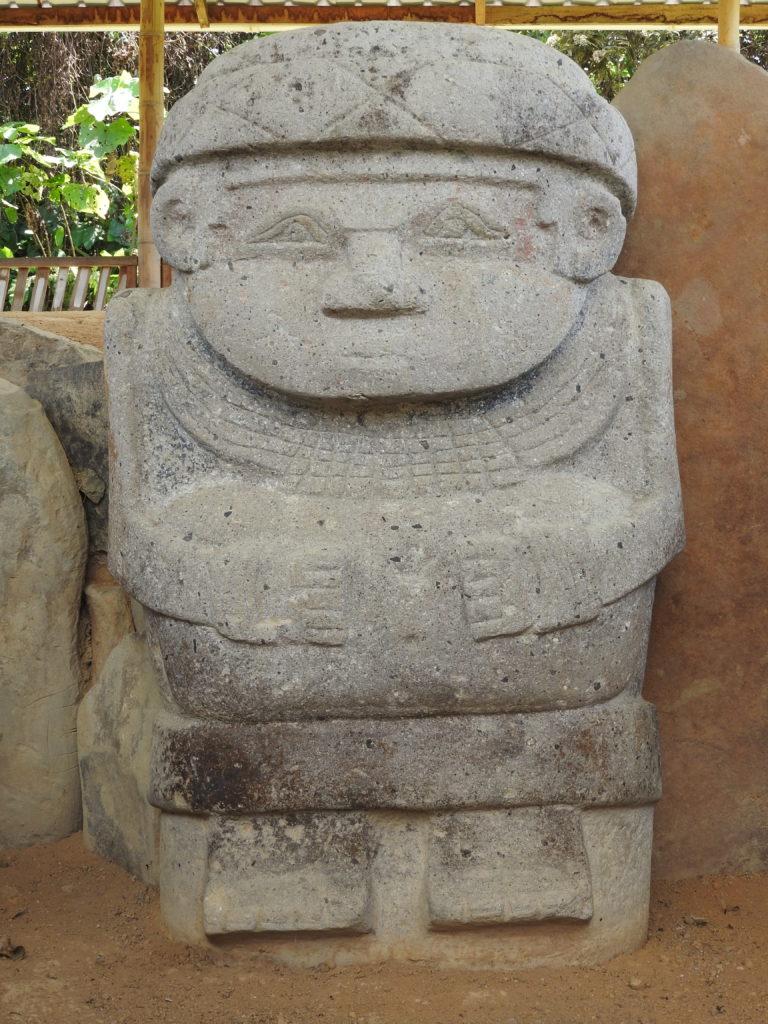
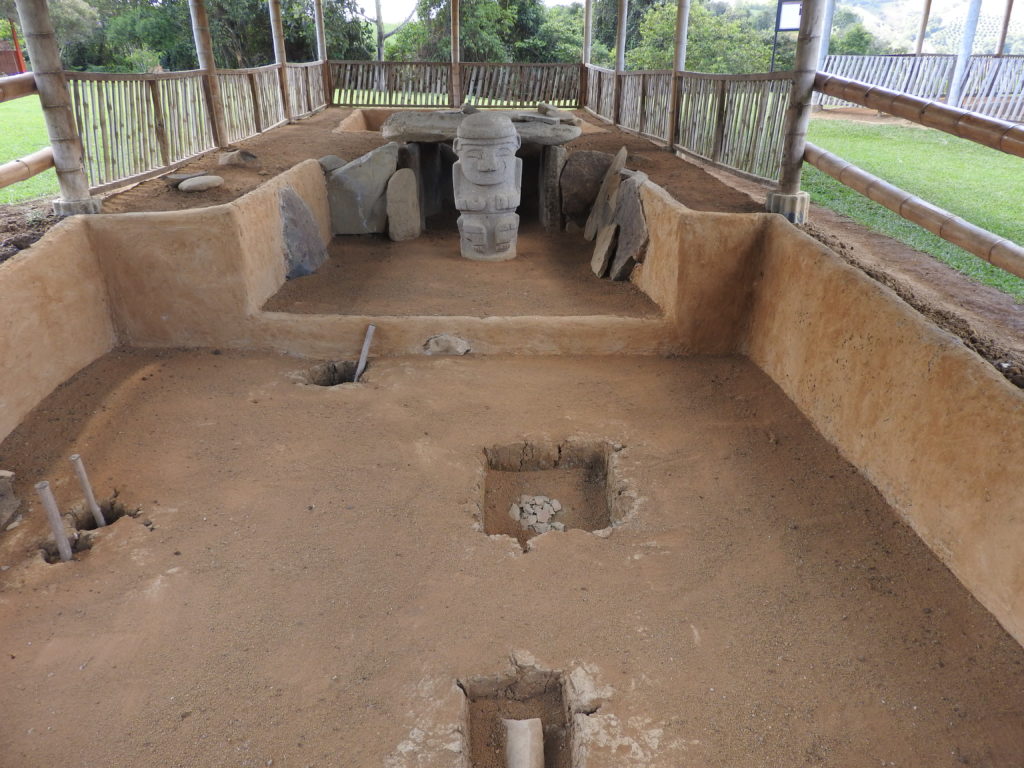
We really enjoyed seeing all the statues, and were looking forward to going to the main park the next day. We made a resolution to read about the statues when we got back to the hostal!
Our next stop was to a waterfall – Salto de Bordones – which is the highest waterfall in Colombia! (allegedly) (around 400m drop). It was a really nice setting, and it was quite an impressive waterfall. The photos don’t really do it justice… (yeah, that’s what they all say….

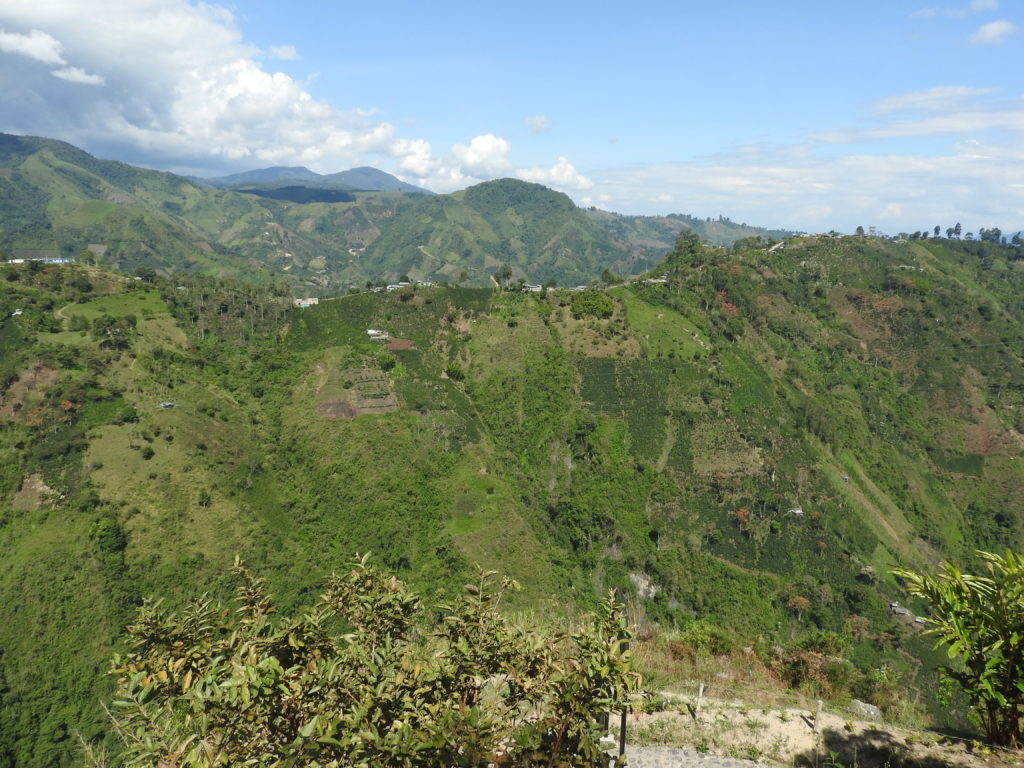
AND FINALLY…. last stop of the day… another waterfall. This one was quite impressive too – but was somewhat spoilt by its not very natural setting. Because it was on private farmland, they were constructing some kind of ‘giant swing fairground ride thing’ for people. It looked a bit ugly next to the falls 🙁
Also, the farm had a cafe, swimming pool, and various other things going on – so it wasn’t really in a very ‘peaceful nature’ kind of environment! The waterfall was called Salto de Mortiño.
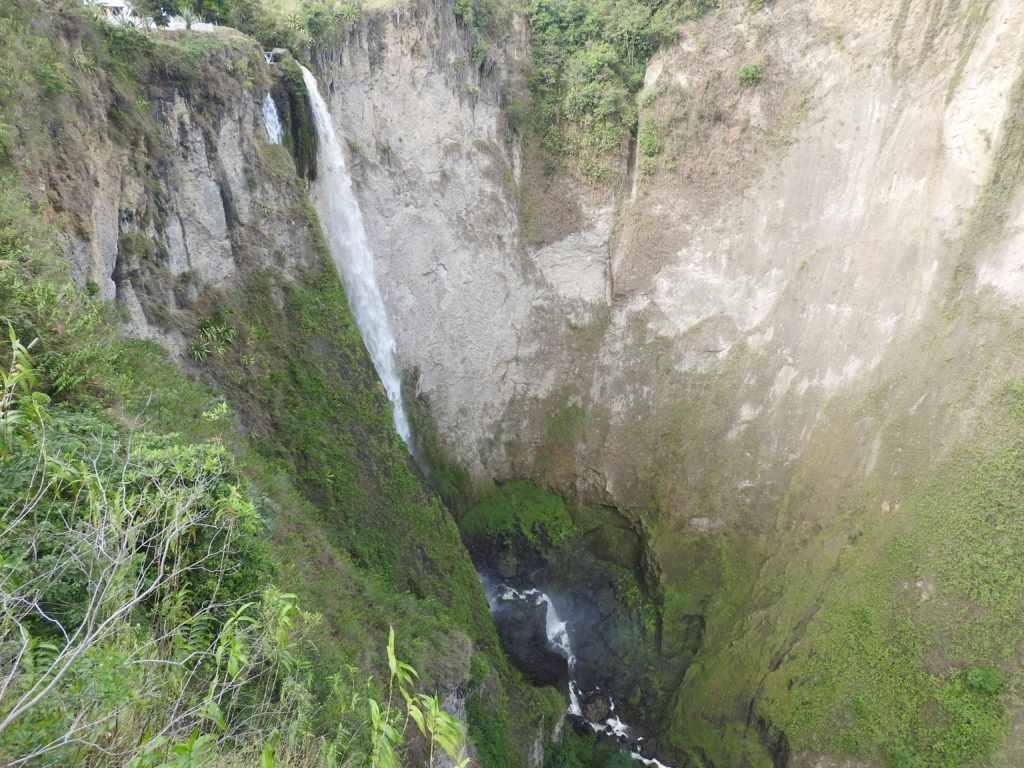

So that was it! The tour was over, and we drove back. It had been a pretty good day – but we were ready for more statues! 🙂
